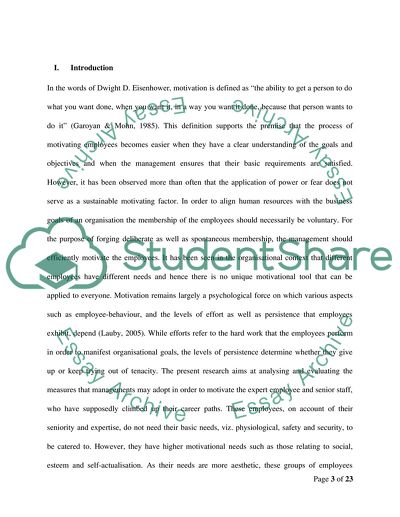Cite this document
(Motivate the Know-How: A Study of Motivation Strategy for Expert Essay, n.d.)
Motivate the Know-How: A Study of Motivation Strategy for Expert Essay. Retrieved from https://studentshare.org/human-resources/1734953-motivate-the-know-how-a-study-of-motivation-strategy-for-expert-employee-and-senior-staff
Motivate the Know-How: A Study of Motivation Strategy for Expert Essay. Retrieved from https://studentshare.org/human-resources/1734953-motivate-the-know-how-a-study-of-motivation-strategy-for-expert-employee-and-senior-staff
(Motivate the Know-How: A Study of Motivation Strategy for Expert Essay)
Motivate the Know-How: A Study of Motivation Strategy for Expert Essay. https://studentshare.org/human-resources/1734953-motivate-the-know-how-a-study-of-motivation-strategy-for-expert-employee-and-senior-staff.
Motivate the Know-How: A Study of Motivation Strategy for Expert Essay. https://studentshare.org/human-resources/1734953-motivate-the-know-how-a-study-of-motivation-strategy-for-expert-employee-and-senior-staff.
“Motivate the Know-How: A Study of Motivation Strategy for Expert Essay”, n.d. https://studentshare.org/human-resources/1734953-motivate-the-know-how-a-study-of-motivation-strategy-for-expert-employee-and-senior-staff.


